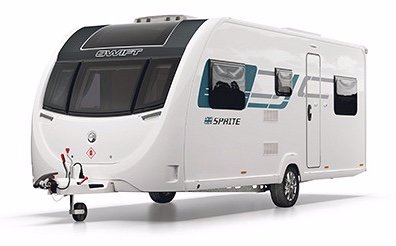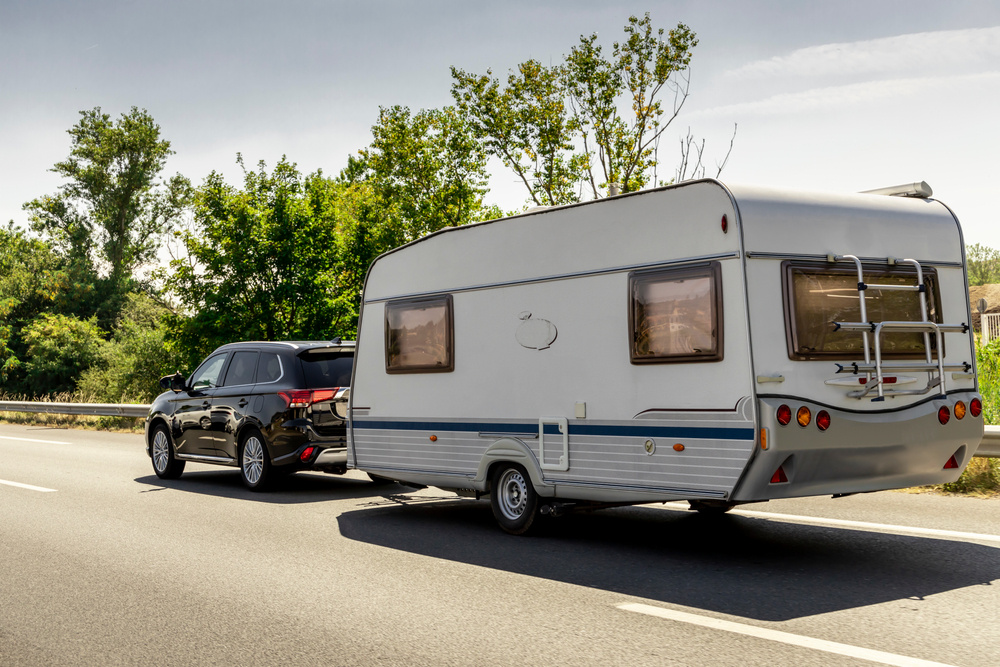Campervan Cooking Adventures - Confit Duck with Charred Fennel
Towing a caravan is usually a pleasant experience, however, when windy conditions arise, it can quickly become quite challenging. If not approached with care, it could also potentially be dangerous for both you and others sharing the road. In this article we’ll explore how to tow a caravan safely in windy weather, including the best way to prepare for your journey, and, crucially, how to deal with sway should it happen when you’ve set off.
Understanding the risks of strong winds
Strong winds can destabilise your caravan, increasing the chance of sway or jack-knifing happening, and also increasing the risk of both the caravan and the tow vehicle overturning. Sudden gusts can also push you off course, causing you to stray into the path of other vehicles. Any of these events occurring could obviously be dangerous, so understanding the potential risks and then mitigating them are the first steps to ensuring you have a safe journey.
When should you not tow?
There’s no set rules or regulations on this, but generally it’s deemed that if you think it’s too windy, then it likely is. Only you know your capabilities, the route that you will be taking, and the weights you are carrying, so it’s down to you to decide. Some people have their own rules, for example suggesting that if you wouldn’t open an umbrella in the winds, then that’s a good indicator that it’s too windy to set off.

Sometimes, the best decision is to delay your trip until the winds die down. If that’s not possible, then it’s important to plan ahead as much as you can. Here’s a few ideas on how to judge whether it may be safe to tow…
Check the weather forecast
Before setting off, consult a reliable weather app such as that provided by the Met Office. If gusts exceed even 25 mph, towing can become increasingly hard so that will be a good indicator for you. Any severe weather warnings should definitely be heeded.
Assess your experience and journey plans
Less experienced towers might want to avoid towing in really windy conditions. It’s probably a good idea to build up to it, and get some experience before tackling harsher conditions. You could also think about changing your route to include backroads, as these might be less exposed to the winds than the open expanse of a motorway.
Consider the suitability of your caravan and tow vehicle
Lighter caravans and smaller tow vehicles are more susceptible to the effects of wind, so have a think about whether your setup is appropriate for the conditions. You can also fit your caravan with stabilisers or anti-snaking devices in advance, which will help.
.jpg?width=4211&height=2832&name=shutterstock_2496087441%20(1).jpg)
Preparing for windy conditions
Preparation is definitely key to minimising the risks when towing in windy conditions. Follow these steps to prepare for your journey…
Load your caravan correctly
Ensure the heaviest items are positioned low inside the caravan, and over the axle. This lowers the centre of gravity and improves the general stability. Put all heavy items on the floor where you can. It’s a good idea to use storm straps to hold the awning down - if awnings come loose, they can create a risk to other drivers by flying off. If you can remove the awning, it might be better to put it inside the caravan to serve as additional central weight.
Check your tyres
Making sure that you have properly inflated tyres on both the caravan and your tow vehicle are critical for maintaining control.
Inspect your tow hitch and stabiliser
Make sure that all connections are secure and that any stabilisers or sway control devices are in good working order.
Check your mirrors
Extended towing mirrors are pretty essential to ensure you can monitor your caravan’s behaviour, especially in windy conditions.
How to drive safely in windy weather
Once you’re on the road, there are several things you can do to help keep your caravan under control…
Reduce your speed
Driving slower gives you more control and reduces the impact of any sudden gusts. Aim to stay well below the speed limit, so driving slowly is key - driving fast definitely contributes to snaking. Also, remember that the direction of the wind plays a part in how stable you are - if it’s coming in at an angle to you, it’s even more important to slow down.
Avoid sudden movements
Slow and steady is how to do it. Make sure you do smooth steering, acceleration and braking to avoid unsettling the caravan, with no jerky movements.
Keep both hands on the wheel
Strong gusts can require quick corrections, so maintain a firm grip at all times.
Stay in the left lane
Motorways and dual carriageways can expose you to side winds, especially when overtaking large vehicles or being overtaken by them. Stick to the left lane where possible, to reduce exposure to additional gusts.
Be cautious on open or elevated roads
Winds are often stronger on bridges, hills or open stretches of road, so approach these areas with a bit of extra caution.

Dealing with caravan sway
If your caravan does begin to sway, it’s really important to stay calm. Here’s what to do in this instance…
Avoid sudden braking
This can worsen the sway, so, instead, gently ease off the accelerator.
Keep the steering wheel steady
Don’t overcorrect - small, controlled adjustments are often more effective. Just focus on trying to keep the vehicle straight.
Use the caravan’s brakes
If fitted with a brake controller, gently apply the caravan’s brakes to bring it back under control. Remember - no sudden, harsh actions! Gently does it.
Know when to pull over
If conditions worsen, it’s better to err on the side of caution. Look for a safe place to pull over, such as a service station or lay-by, and wait for the wind to subside. There’s no shame in prioritising everyone’s safety over reaching your destination on time.
Towing a caravan in windy conditions demands a little bit of vigilance, and a certain amount of respect for the elements. By knowing when to tow, taking the right precautions, and then being cautious on the road, you can minimise the risk and enjoy your journey safely. Remember - no trip is worth compromising your safety - or that of others on the road. Plan wisely and drive carefully, and stay prepared for the unexpected when wind is concerned!







